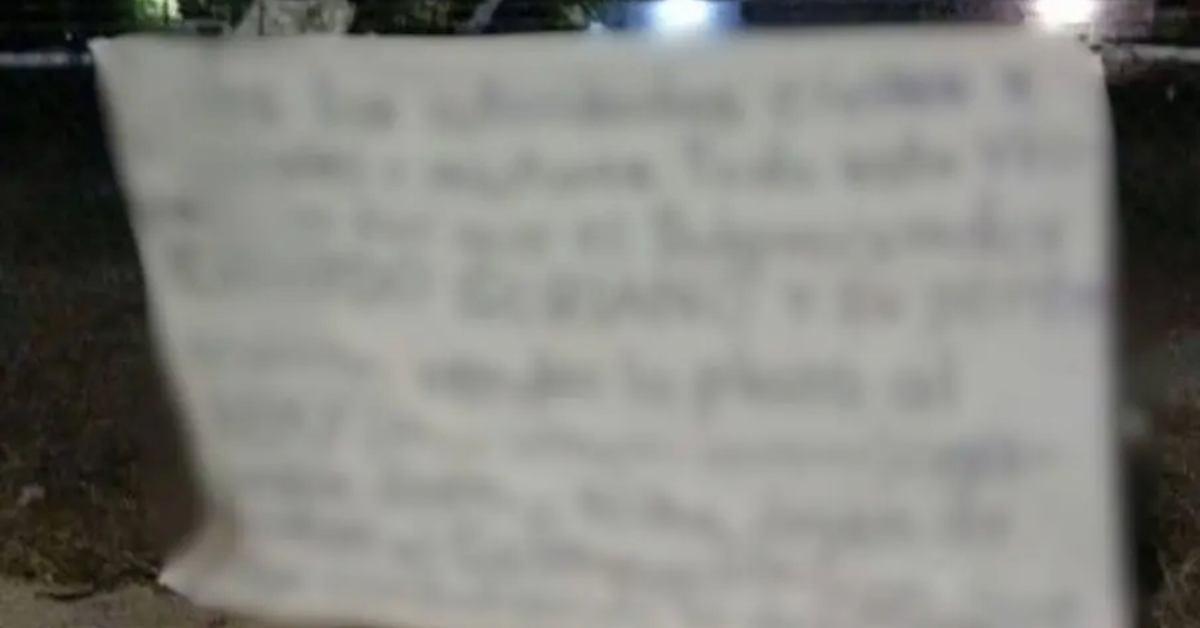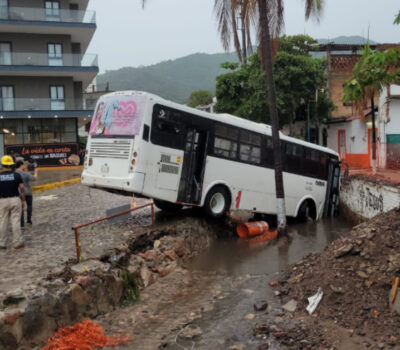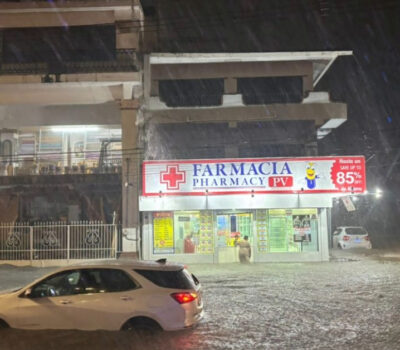Two narco-banners surfaced in La Paz after a violent weekend that left eight people dead across La Paz, Comondú, and Loreto. Authorities are silent on the accusations.
Two narco-banners appeared in La Paz on Sunday morning, escalating tensions after a violent Saturday that left eight people dead in Baja California Sur. The banners, which emerged in the neighborhoods of Revolución and Las Américas, publicly accuse civil and military authorities of colluding with organized crime and failing to contain the region’s growing violence.
According to early reports, the banners directly blame the State Attorney General’s Office (PGJE), singling out a senior official for allegedly manipulating information and misleading the state’s governor about the real security situation. The messages claim that the recent wave of killings is the result of internal decisions made by that office, sparking speculation and concern across the state.
The banners were swiftly removed by security personnel shortly after being discovered. As of Monday morning, no official statement has been issued by authorities regarding the contents or origin of the messages.
The emergence of these banners comes on the heels of a deadly Saturday that rocked the municipalities of La Paz, Comondú, and Loreto. The coordinated series of armed attacks left a trail of bloodshed and fear, prompting an emergency response from security forces.
Timeline of Violence
The violence began in the capital city of La Paz, where an agent from the PGJE was shot and killed in an armed confrontation. One of the attackers was also killed in the shootout, which reportedly occurred after police forces repelled the assault.
Later that day, another confrontation erupted in La Paz’s Roma neighborhood. This time, a shootout between armed civilians and law enforcement left three alleged criminals dead. One officer was also wounded in the exchange and was taken to a hospital for treatment.
In Comondú municipality, in the community of Ciudad Insurgentes, another man was gunned down in a separate attack. Authorities reported the victim died at the scene.
Meanwhile, in Loreto’s Zaragoza neighborhood, a violent incident claimed two more lives. A man was shot and killed on the spot, while a woman injured in the same attack succumbed to her wounds later at the hospital.
In total, the coordinated attacks left eight dead—six men and two women—and one police officer injured. These events have underscored the increasingly volatile security environment in the state, which has seen a resurgence of cartel-related violence in recent months.
Response and Silence
In response to the wave of attacks, local and federal authorities have reportedly ramped up security operations, deploying joint patrols across La Paz, Comondú, and Loreto. Officials from the state’s Security Roundtable confirmed increased surveillance in high-risk zones and ongoing intelligence efforts to identify the perpetrators behind the attacks and the banners.
However, the lack of an official response to the narco-banners has raised questions about the transparency and effectiveness of the government’s approach to organized crime. The banners’ bold accusations against specific public officials, particularly within the PGJE, have only deepened the sense of public unease.
The appearance of narco-banners is a tactic frequently used by criminal groups in Mexico to intimidate, threaten, or discredit authorities. While their messages often contain unverified claims, they tend to reflect ongoing power struggles or betrayals within and between organized crime factions and state institutions.
A Fragile Calm
As the weekend’s violence settles, communities across Baja California Sur remain on edge. Residents in affected areas report increased military and police presence, though many question whether these deployments are enough to stop the bloodshed or address the systemic issues allegedly driving it.
The banners have sparked online discussions and concern among citizens, many of whom fear that the accusations—whether true or not—signal deeper problems within the institutions meant to protect them.
For now, Baja California Sur faces a fragile calm. With no public statements from the governor, the PGJE, or federal forces, the state remains in wait—and worry—about what comes next.
Two narco-banners surfaced in La Paz after a violent weekend that left eight people dead across La Paz, Comondú, and Loreto . . .












